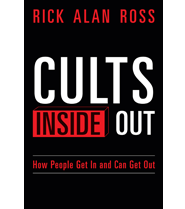What Jan. 6 Revealed About QAnon and Militias
Published By admin
From flags etched with burning Qs to “Where we go one, we go all” T-shirts and the infamous “QAnon Shaman,” the presence of QAnon at the Jan. 6 Capitol attack was palpable. Also prominent, albeit somewhat less visibly, were various insignia signifying membership in far-right extremist groups like the Oath Keepers, Proud Boys, and Three Percenters.
The affiliations are distinct and without obvious overlap. QAnon adherents and these anti-government extremist groups seem entirely separate. They emerged as independent entities. People who dissected the early “Q drops” on 4chan and 8kun or who reposted QAnon conspiracy theories were not necessarily anti-government extremists, and their activities were primarily online. Oath Keepers, Proud Boys, and Three Percenters, by contrast, were defined by anti-government extremist beliefs and tended to mobilize offline in structured groups. But Jan. 6 brought many of them together. Which raises the question: Did QAnon adherents and far-right extremists turn up at the Capitol through independent motives, or did they share something in common?
The evolution and convergence of the groups’ ideologies has been a significant topic of discussion among researchers. But fewer of them have considered the question in the context of Jan. 6.
With that in mind, I conducted a study of 18 individuals arrested in connection with the Jan. 6 attack. All individuals have alleged links to both QAnon and one of three far-right extremist groups: the Oath Keepers (nine of the 18), the Proud Boys (four of the 18), or the Three Percenters (five of the 18). My review of court documents, social media posts, and reporting about their cases—as well as scholarship on extremism—revealed three shared ideological pillars: a belief in government corruption, apocalypticism, and a responsibility to defend.
Content retrieved from: https://www.lawfaremedia.org/article/what-jan.-6-revealed-about-qanon-and-militias.






